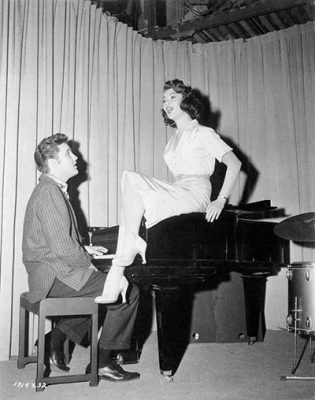
The Pelvis as Foundation
For better or for worse, we do a lot of sitting. We sit for leisure and for work, alone and with company, on chairs, sofas, car seats, bike seats, rocks, logs, yoga blocks and earth. In every case, your pelvis is the part that meets the seat—the foundation of your bodily temple. It’s the pelvis’ job to support the parts above it in your upright position. When your pelvis isn’t doing its job efficiently, difficulties can develop in any part of yourself. Neck and shoulder pain, back pain, pain in the hips and buttocks, even leg and foot pain, can have some relationship to the way your pelvis is organized in sitting. While a Feldenkrais mini-lesson is not a panacea, a little Awareness Through Movement might improve your experience of yourself enough to make a difference to you and your overall sense of well-being.
How to Do the Lesson
You can do these movements right in your desk chair with the soles of your feet on the floor, or sitting on the floor with your legs crossed. Wherever you are, make sure you can feel the bottom of your pelvis firmly against the surface you are sitting on. (A squishy sofa won’t work so well.) Repeat the movements described by each instruction several times, then pause for a short rest. Move slowly, in a small range, smoothing out the movement wherever you can.
A Feldenkrais Mini-Lesson to Improve Sitting
1. Sense your yourself in sitting: Is your pelvis tilted forward or back? Right or left? How can you tell? Do you feel it in the way your buttocks contact the chair? Do you feel some asymmetry in your back or a difference in the length of your two sides? Can you feel your sitz bones (ischial tuberosities) poking into the chair? Are you sitting more on the front side or the back side of those bones? Do you observe more pressure through one or the other of the two sitz bones?
2. Which side of your pelvis seems to make lighter contact with the chair? Lift that side of your pelvis even more, rolling your weight a bit more onto your other buttock. (If you don’t sense one side is lighter, then just pick one side.) Do that several times, listening carefully to your movements. What else besides your pelvis moves? Does your head move? Do your ribs change their shape at all?
3. Still playing with the same side you lifted, put your hand lightly on the top of your head. (If you lifted your left buttock, put your left hand on your head.) Lower your elbow sideways and down toward the floor several times. What parts of yourself are affected? Does your pelvis move at all? Remember, move slowly, in a small range, smoothly as you can. Pause and rest in a neutral sitting position before you go on to the next instruction.
4. With your hands resting on your thighs, lightly lift your shoulder toward your ear (still on the same side). Do that several times, listening closely to your breath. How is your breathing affected? Can you make the movement a little easier?
5. Put your hand on your head and repeat the lowering of your elbow. Do you feel this movement in a different way than you did the first time? Does anything feel easier? Do you feel more of yourself in your sensory “picture”?
6. Continue the lowering of your elbow, but this time, lift that same side of your pelvis as you do it. Fold your ribs towards one another. Then, as you raise your elbow to come back to your starting place, lower your buttock back to the chair. As you continue with this movement, what do you feel in the two sides of yourself? What shortens? What lengthens?
7. Stop and notice yourself in your sitting position. Do you sense differences between the two sides of yourself? Ask yourself again the questions in instruction #1. Do you notice any change from when you first began the mini-lesson? What feels most different?
8. If you like, repeat the sequence on your other side.
(The fine print: The Feldenkrais Method ® of somatic education is presented on this website for educational and entertainment purposes only. The Method and all articles, videos, photos, audio recordings, and documents of any kind available on this website are not intended to be a substitute for professional help or medical treatment. Nothing on this website is intended to diagnose or treat any pathology or disease of any kind. This website, all media files found on it and the creator of any and all of these files, and anyone featured on these files, cannot be held responsible for any injuries or discomfort that occur. Before doing any of the movement lessons described or portrayed on this site, consult your medical practitioner.)